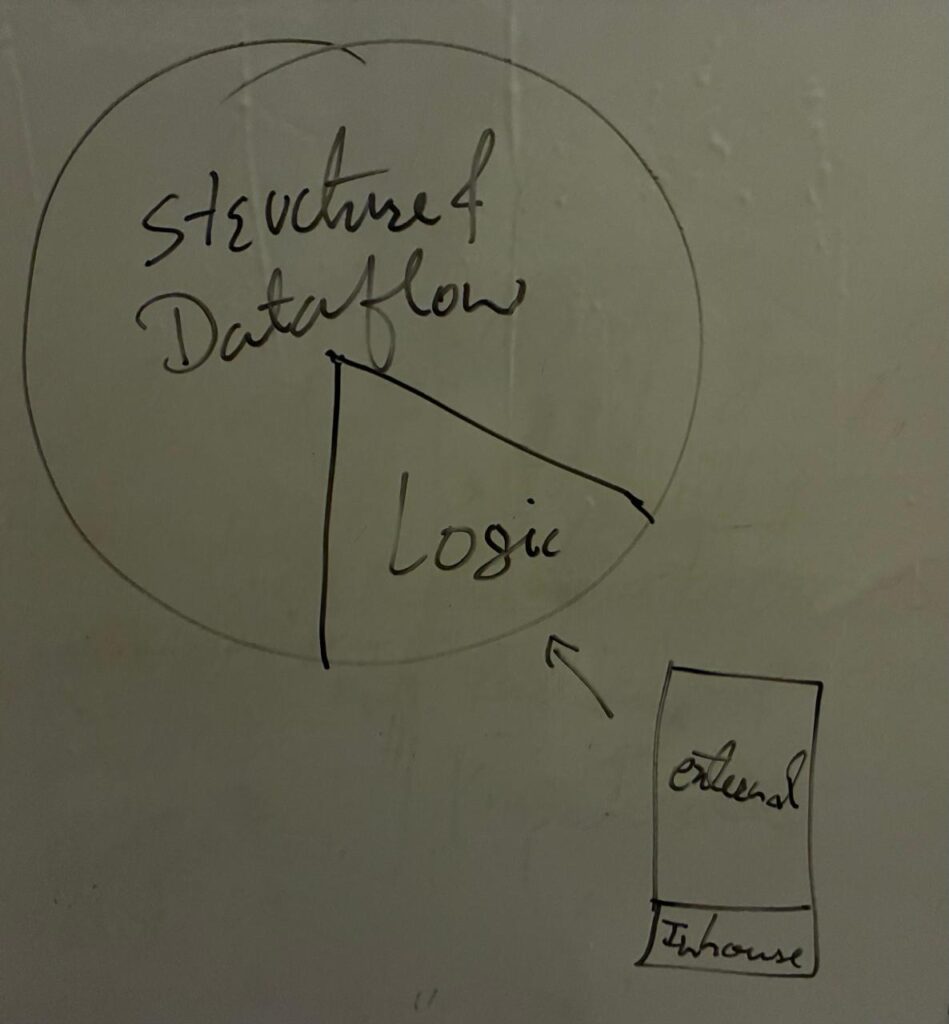
A lot of people think they need to “learn Python” to use Django, but that’s kind of a myth.
Once you actually start using Django, it barely feels like Python anymore.
It’s its own language. Its own structure. Its own way of doing things.
If you’re just building a basic social media app or something equally simple, then what exactly are you even doing that needs custom Python logic?
Take a basic example.
Say you’re making a collaboration tool where users are copying information (leads, quotes, etc) from a web, storing it, and then pushing it to a shared database post review and others can access and contribute to the same shared database.
That’s not heavy logic. That’s just routing data from one place to another. It’s a dataflow app.
And this is the real distinction: dataflow apps vs logic-heavy apps.
Most apps today are just dataflow. The real work is setting up where the data comes from, where it goes, and who can see what.
You don’t need deep logic for that. You need structure. And structure is what Django gives you out of the box.
In most companies that call themselves “tech,” how much of the actual code is logic?
Maybe 20%.
And out of that 20%, how much is truly written in-house?
Maybe 20% of that.
The rest is just libraries, external tools, APIs. Because in this age of specialization, you don’t rebuild what’s already been built better by someone else. You just integrate it.
So when someone says, “Hey, I’m learning Python so I can build stuff,” they might be focusing on the wrong thing.
Python teaches logic, but most apps don’t need new logic.
If you put in all that time and effort, the best you’ll build from scratch is a calendar or a to-do list.
And even for that there’s already ten libraries that do it better.
That’s why Django and PostgreSQL are such powerful starting points.
They’re your Pareto tools. They give you 80% of the results with 20% of the learning.
The rest? Just wiring in libraries, calling APIs, or even letting AI generate the missing logic.
At the end of the day, it’s not about logic.
It’s about data. Good data with mid recommendation algos outperforms good algorithms with bad data.
So your job is to be a God at Django, at PostgreSQL, and at marketing so you can procure good data, structure it right, and push it in front of the right people.
You’re building dataflow apps.
That’s it.
Most logic won’t be in-house. Most problems have already been solved.
If you’re building something where no libraries exist, where no one else has done it, and you can’t even get AI to write it then that’s a red flag.
That means the demand isn’t there yet. And you’re not here to create demand. You’re here to channel demand.
That’s why logic is rarely the bottleneck. Data is. Structure is. And Django nails both.
(substitute django and prostgresql w whatever you want, like or use idc)
(In case you are wondering wdym marketing to get good data? Your social media app is worth anything if users are posting good stuff, your marketplace is worth anything if your users are posting good offers. That is the data you are pushing. That comes from actual users and you need to attract them with marketing)
(A good analogy would be to think of yourself more as a supply chain company that sells products, your job is to move things. Your partners and few inhouse units will deal with the product manufacturing and processing. But your main work is to coordinate the movement of product from source to end user while making sure all necessary processing and manufacturing activities are planned and done.)